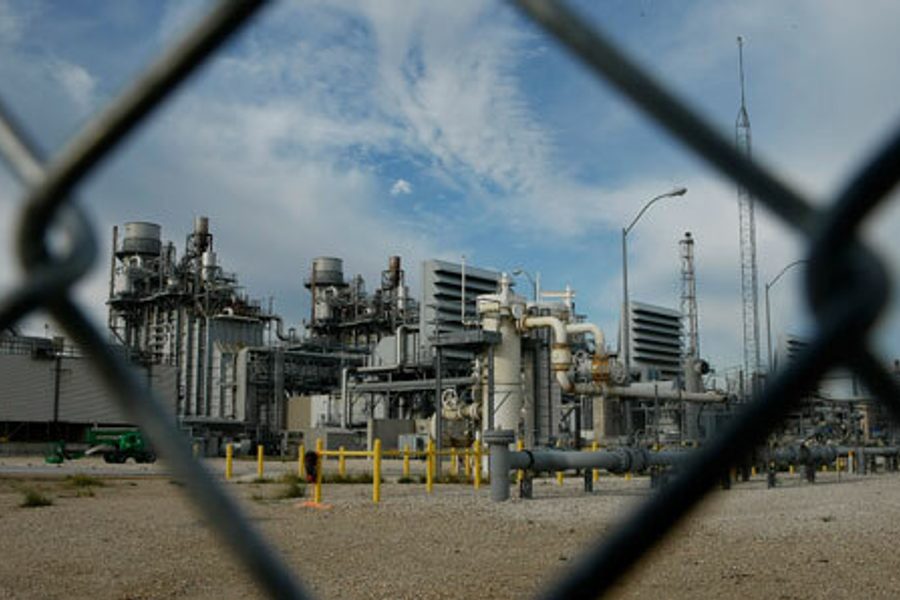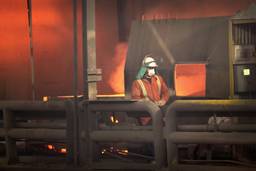
By Leo Gerard, president of the United Steelworkers International Union
No more than a thimbleful of hydrofluoric acid killed 37-year-old Alcoa technician John L. Dorton in fewer than seven hours from the moment he inhaled the mist at the plant where he worked in Port Comfort, Texas.
It’s that deadly.
The transportation of hydrofluoric acid to factories and its use there imperils workers and nearby residents. Environmental, safety and advocacy groups for years have demanded that manufacturers substitute safer chemicals or processes whenever possible.
As far back as 2003, U.S. Public Interest Research Group (PIRG) issued a report called “Needless Risk,” detailing how oil refineries using hydrofluoric acid unjustifiably jeopardize workers and surrounding communities, especially in a time of potential terrorist attacks.
Only about 50 of the nation’s 148 petroleum refineries boost octane with hydrofluoric acid. The others use sulfuric acid or a different process. Sulfuric acid is hazardous as well, but a tanker spill is more easily cleaned and doesn’t form a potentially lethal, hovering cloud that defies dispersal. In addition, exposure to sulfuric acid manifests instantly as a burn on the skin. So does hydrofluoric acid in high concentrations. But hydrofluoric acid is insidious. A dilute hydrofluoric acid doesn’t immediately burn. Blistering may be delayed by 8 to 24 hours. In the meantime, hydrofluoric acid penetrates the skin, destroying soft tissue and decalcifying bone. If inhaled, it devastates lung and esophagus tissue. After any exposure, chemical maker DuPont recommends treatment occur “within seconds.”
In just the past five months, accidents at three refineries involving releases of hydrofluoric acid injured 13 workers, two of them critically. One is a 34-year-old member of my union, a husband and father of two. He’s in a San Antonio hospital clinging to life after 10 surgeries and an amputation.
Refinery workers and their communities pay too high a price for high octane fuel created with hydrofluoric acid. The United Steelworkers (USW) union joins groups like PIRG, Clean Water Action and Center for American Progress in demanding that refineries using hydrofluoric acid switch to sulfuric acid or another safer method to enhance octane.
Clean Water Action of Pennsylvania repeated its call for conversion to safer technologies in March after two spills occurred in one month in Eastern Pennsylvania, one forcing evacuation of 5,000 residents. Myron Arnowitt, Pennsylvania Director for Clean Water Action, said then, “It just goes to show that we need to get away from this dangerous chemical before the refinery itself or one of its trucks has an accident inside the City of Philadelphia.”
“We’re getting closer to a real disaster,” he said.
Here’s what prompted that statement:
First, on March 11 at the Sunoco refinery in South Philadelphia, release of hydrofluoric acid sent 10 workers to two hospitals for exposure to vapors.
Then, just 11 days later on March 22, a truck carrying 33,000 pounds of hydrofluoric acid to a refinery overturned in a town north of Philadelphia called Wind Gap, causing a small spill. Because the acid is so dangerous, police and fire officials evacuated 5,000 residents for nine hours.
Two more episodes followed in quick succession:
On July 19, a fire and massive release of hydrofluoric acid at the CITGO Petroleum Corp. refinery in Corpus Christi, Texas, critically injured the 34-year-old USW member. CITGO estimated that 4,000 pounds of hydrofluoric acid escaped.
Less than a month later, on Aug. 6, hydrofluoric acid escaped again, injuring two workers, critically wounding one, at the ExxonMobil refinery in Joliet, Ill.
A year earlier, in yet another incident, a hydrofluoric acid leak at the Holly refinery in West Bountiful, Utah, injured a worker and forced the evacuation of another 600 on Aug. 15, 2008.
And a year before that, in Sarnia, Ontario, just over the border not far from Detroit, a Suncor refinery accident sent oil and hydrofluoric acid into an open trench, where construction workers stood 200 feet away. Twenty-three suffered breathing problems and nausea and were treated at a hospital.
In any of these cases, this lethal chemical could easily have killed workers or members of the community.
In recent years, the refinery industry has installed safety devices, including water curtain and cannon systems, rapid acid dump systems and a vapor suppression additive to mitigate the possibility of a Bhopal cloud.
But John L. Dorton died for lack of a couple of trivial pieces of equipment, any of which may have saved his life. A U.S. Department of Labor investigation determined that Alcoa required maintenance workers to wear hydrofluoric acid cartridge respirators and face shields. And the Labor Department established that Alcoa provided maintenance workers with special tools to prevent discharge of hydrofluoric acid during the stem valve cleaning procedure Dorton was conducting when he got sprayed. But, the investigation concluded, Alcoa didn’t do the same for technicians like Dorton. It failed to give them the tool or instructions to use the respirator and face shield.
Because corporations cannot be trusted, because they continually make such errors, hydrofluoric acid must be eliminated whenever possible.
Safety consultant Paul Orum put it this way: “Adopting safer chemicals is the only certain way to protect American communities from a toxic gas release.” He was hired by the Center for American Progress, a nonpartisan research and educational institute, to prepare a report issued last fall, called “Chemical Security 101, What You Don’t Have Can’t Leak, or Be Blown Up by Terrorists.”
It lists the 101 most dangerous chemical facilities in the U.S., including eight petroleum refineries using hydrofluoric acid. Among those is the Sunoco refinery in Philadelphia that released hydrofluoric acid in March. It’s listed partly because the surrounding population is 4.4 million. Others include PDV Midwest Refining (CITGO) in Lemont, Ill., with a nearby population of 3.1 million; Marathon Petroleum in St. Paul Park, Minn., with 2.2 million adjacent residents, and Chalmette Refining (ExxonMobil) in Chalmette, La., with 1 million neighbors.
When confronted with demands to convert to safer octane boosting methods, the likes of ExxonMobil and CITGO – both of which had spills this year – cry that they can’t afford it.
Excuse my French, but: Baloney.
As Chemical Security 101 points out, switching to a safer process enables a facility to stop complying with costly, federally-mandated security measures to prevent terrorism. In addition, the manufacturer’s insurance premiums for liabilities for deaths, injuries, contamination and property damage in the event of a major toxic gas release would decline.
Really, though, for ExxonMobil to cry poor is galling. This is the corporation that reported the largest annual profit in U.S. history for 2008 – $45.22 billion.
Yesterday was Labor Day 2009, a time of tribute to the contributions of workers. The refineries in this country still using unnecessarily hazardous hydrofluoric acid must ensure their workers and the residents of their neighborhoods live to see Labor Day 2010 by making the conversion now.
This article originally appeared at the United Steelworkers blog.







